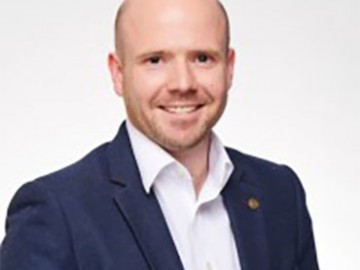Using a capabilities approach to plan for the unknown

As the world continues to recover and react to the ramifications of the pandemic, one thing is certain—COVID-19 poses one of the most unique and compelling reasons for rapid change that higher education has ever encountered.
Almost overnight, institutions had to adapt to virtual services, simplify and standardize their processes, and increase the quality and quantity of self-service tools—all whilst working from bedrooms, living rooms, kitchen tables, or gardens.
In my previous blog, I considered the changing behaviors in higher ed, driven by the impact of COVID-19. I think it’s fair to say that the past two years have seen behaviors change, change, and change again. I recently read about this level of change. It was insightfully described as “the only certainty is planning for the unknown”. But how can institutions best position themselves to leverage agility and innovation in a turbulent future?
A capability-driven approach
It is in circumstances where rapid change is needed (or even forced) that the weaknesses of focusing on business processes are exacerbated. This is why Ellucian focuses on digital transformation underpinned by a capability-driven approach. There are three key foundations to being able to respond:
- data must be swiftly and accurately implemented to create insightful decisions and influence effective responses
- processes need to be simple, effective, consistent, and repeatable
- people cannot operate in silos—teams delivering capabilities must share processes using common applications
You can learn more about these approaches in part one and two of our digital transformation frameworks articles.
Capabilities versus business processes
When I look back at my 18 years of experience in higher ed, there were many projects that fixated on business processes, thus replicating how something is done. My focus was often on how to make my team and my workload more efficient and effective in delivering an excellent student experience.
I’ll be the first to admit that I was guilty of making decisions that were centered around processes unique to my team. When I started to look at change across functional areas, I saw how these types of decisions were building complexity and silos, making management reporting almost impossible.
Whilst this is an effective short-term solution, it’s vital we consider what this does in the long term, and how it will help deliver institutional objectives.
This is where taking a capability-based approach comes in. It takes the incentive away from ‘how does our business do this’ and looks more at ‘what do we need to do to reach our business objectives’. It defines the route to those objectives and allows the focus to be put on simplifying the journey.
Recruitment example
Recruitment is one area in higher ed that has always been complex. All too often I’ve seen recruitment teams working towards assorted objectives and priorities. Different departments use varying processes and tools, with the hope of combining silos to deliver on an institutional objective such as increased student numbers.
It’s time for recruitment-focused teams such as marketing, admissions, faculty, and administration to sing from the same hymn sheet and work consistently, capturing consistent data using common applications. The closer the working practices, the more responsive, adaptable, and ultimately prospect-, applicant-, and student-focused your operation will be.
Royal Holloway case study
This is something the Royal Holloway, University of London experienced before they made the decision to move Ellucian Banner to the cloud. This transition set the wheels in motion to future-proofing the institution, which aligned with Royal Holloway’s digital transformation strategy to support the university’s growth goals.
Now, Royal Holloway can keep up with global competition and increase student enrollment while streamlining administrative tasks. It is estimated that at least £1 million (direct and indirect) worth of savings will be made across five years. Learn more about Royal Holloway’s experience here.
Conclusion
Looking ahead, institutions must do all they can to ensure that single points of failure do not exist. They must renovate their processes and applications in order to empower teamwork, collaboration, and innovation in the delivery of capabilities.
In doing so, your institution will realise the following benefits:
- capabilities aligned with strategic objectives that provide transparent and informed prioritisation
- an in-depth review of all elements impacting objectives, not solely functional requirements
- capabilities which become more stable over time, delivering increased long-term value
- an understanding how the delivery of the capability will affect people, process, and technology
Call to action
At Ellucian, we’re focused on capabilities, our products, and our implementation. We have more than 50 years of successful partnerships with over 2,700 institutions. Whether your institution is large or small, we have a solution that fits. Connect with us today.

